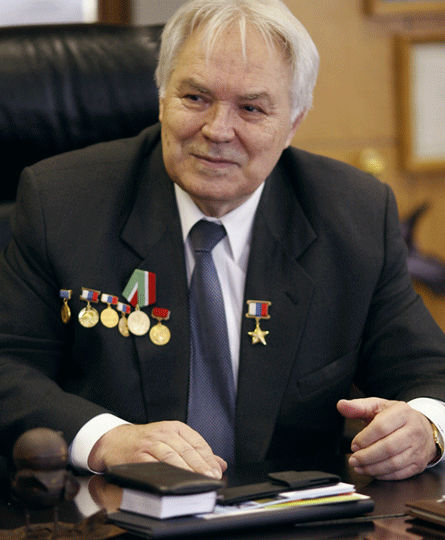Interviewing Mikhail Simonov was not exactly conducive to working on tight deadlines. As one former Flight International journalist recalls, the experience usually ended with an upturned vodka bottle, stubs of several unfiltered cigarettes and a mess of hazy notes to be reconstructed later - after a required interval for recovery.
But as the former general director of the Sukhoi Design Bureau, Simonov, who died on 4 March after a long illness, is more richly drawn than the easy caricature of a boozy, Soviet-era bureaucrat.
In Simonov's career, there were two defining achievements, and either one alone could have established his legacy as the most important figure of modern Russian aviation.
 |
|---|
As chief designer of the Su-27 Flanker after 1976, Simonov fixed the fatal flaws of the first T-10 prototypes, leaving only the ejection seat and landing gear untouched in his comprehensive redesign of Oleg Samoylovich's original concept.
The result moulded Sukhoi's modern identity as a maker of highly agile fighters that remain controllable even in extreme regimes of angle of attack and low speed.
Simonov's second defining achievement came after January 1983, the month he was appointed general designer of the Sukhoi Design Bureau.
A sometimes divisive figure - he reportedly banned the rehiring of engineers who fled Sukhoi amid the industrial turmoil of the early 1990s - Simonov seemed an unlikely leader of a large and sophisticated workforce.
But Simonov quickly adapted to a new economic reality as the USSR collapsed, pioneering exports of the Su-27 - a prize of Soviet combat power - to former rivals in China and India. Even before the Soviet Union's fall, Simonov pressed the perestroika reforms to their limit, parading the Su-27 in 1989 not only at the Paris air show, but in seemingly random venues, such as an air show in Oklahoma City.
Simonov's embrace of a globalised arms market allowed Sukhoi to survive even as the Mikoyan Gurevich (MiG) design bureau faded in relevance. It was Sukhoi that continued innovating in the depths of the post-Communist reforms, with first flight of the forward-swept-wing Su-37 Berkut in 1997.
But Simonov's personal clashes evidently took a toll. It was reported that Russia's air force chief refused to attend the Berkut's first flight event because of a personal feud with Simonov. The Russian press also reported grumblings from Sukhoi's factories, which resented a perceived disproportion in the distribution of revenues with Simonov's design house.
By the end of the 1990s, it had also become clear that Simonov's costly, decade-long work on the Berkut was a technological dead-end - not a stepping-stone to a fifth-generation fighter to succeed the Su-27. Simonov's other passion - deploying a supersonic transport for the civil market - also led to nothing.
In 1999, on the eve of the Paris air show that witnessed a spectacular crash of an Su-27 caused by pilot error, Sukhoi's board of directors stripped Simonov of his title as general director, but allowed him to keep the title of chief designer.
Simonov was succeeded as Sukhoi's boss by Mikhail Pogosyan, who now leads United Aircraft, a corporation that includes Sukhoi and MiG under the same umbrella.
Pogosyan paid tribute to his former superior: "Mikhail Petrovich Simonov is an epoch in domestic aviation. This was a man who had a vision and knew how to take risks for future success."
Seven years ago, Simonov explained to Russia's Izvestia newspaper the design philosophy that guided how he shaped a family of Flankers, including the Su-27, Su-30, Su-33 and Su-34, and a series of aerobatic aircraft - the Su-26, Su-29 and Su-31.
"An aircraft is designed as if by itself," Simonov said. "We know what performance and dimensions the radar should have, and fitted behind it should be a set of electronic equipment identifying position of the aircraft in flight, then comes the cockpit with the ejection seat, and avionics section accommodating all electronic devices controlling the aircraft.
"This way the first part of the aircraft makes its appearance," he continued. "Then we have to ensure superiority over the enemy - better flight performance, better attack angles. We choose what wings it should have. Thus, step by step the aircraft takes shape. And after it happens, we have to decide where to mount missiles, where to put engines, where to pour fuel. If we drew the aircraft first, and then tried to squeeze everything inside, nothing would fit there."
Source: Flight International



















